跨文化交际实用教程Unit 3
- 格式:ppt
- 大小:789.00 KB
- 文档页数:25
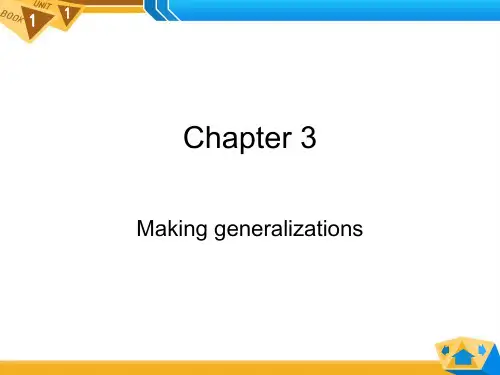
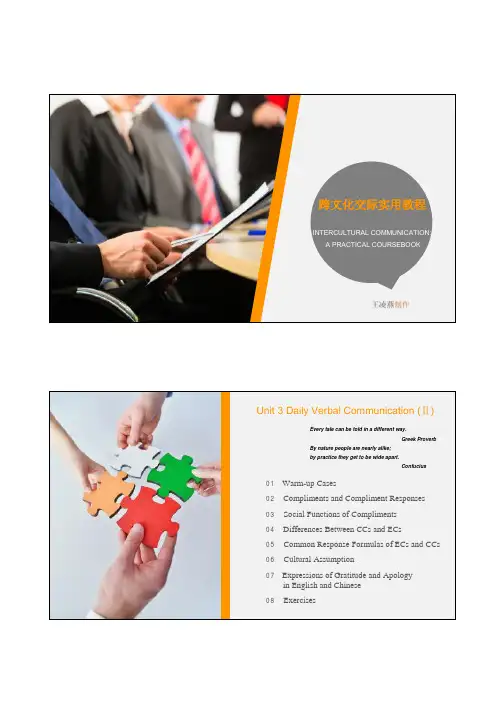
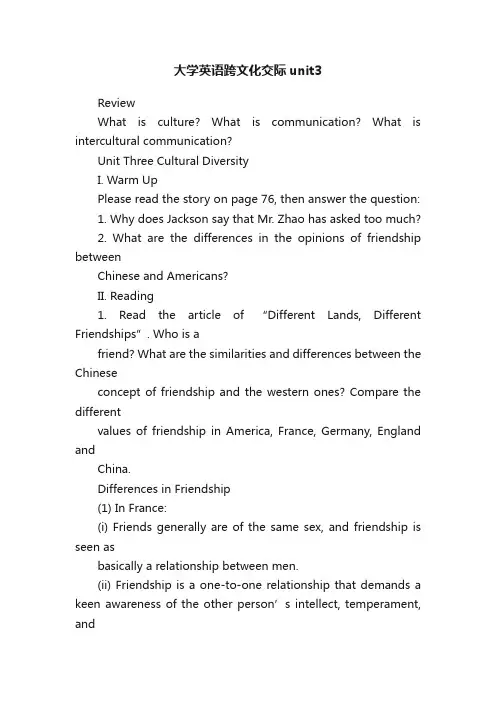
大学英语跨文化交际unit3ReviewWhat is culture? What is communication? What is intercultural communication?Unit Three Cultural DiversityI. Warm UpPlease read the story on page 76, then answer the question:1. Why does Jackson say that Mr. Zhao has asked too much?2. What are the differences in the opinions of friendship betweenChinese and Americans?II. Reading1. Read the article of “Different Lands, Different Friendships”. Who is afriend? What are the similarities and differences between the Chineseconcept of friendship and the western ones? Compare the differentvalues of friendship in America, France, Germany, England andChina.Differences in Friendship(1) In France:(i) Friends generally are of the same sex, and friendship is seen asbasically a relationship between men.(ii) Friendship is a one-to-one relationship that demands a keen awareness of the other person’s intellect, temperament, andparticular interests.(iii) Friendships are compartmentalized. They are not made part of family life.(2) In Germany:(i) Friendship is much more articulately a matter of feeling.(ii) Friends usually are brought into the family.(3) In England:(i) The basis is shared activity.(ii) English friendships are formed outside the family circle, but they are not contrapuntal to the family nor are they separated from thefamily.(4) In ChinaThe typical Chinese concept of friendship lays great emphasis on personal loyalty and also has much to do with family. In Chinese culture, friendshipmeans a willingness to be indebted and to repay the debt more than owed.(5) In America: (p81-82)“Friend” is often used in a much wider sense in the American culture than in the Chinese culture. The term may be used for both casual acquaintances and close companions. American friends may not share with one another as much as Chinese friends usually do. Americans would still prefer to consider themselves first as independent individuals. What they value more are individual achievement and independence rather than relationship with one another, and they do not like to put themselves in others’ debt. Of course, Americans are willing to help their friends, but mostly on trivial things, such as driving a friend to an important event when his or her own arrangementsfor transportation fail.Supplement:Some American quotes about friendship will give additional insights into how friendships are valued.“A friend hears the song in my heart and sings it to me when my memory fails.”“A single rose can be my garden... a single friend, my world.”“A friend brings out the best in you.”“Grief can take care of itself, but to get the full value of joy you must have someone to divide it with.”—Mark Twain Common Elements about Friendship:There is the recognition that friendship, in contrast with kinship, is a matter of free choice. A friend is someone who chooses and is chosen. Related to this is the sense each friend gives the other of being a special individual, on whatever grounds this recognition is based. And between friends there is inevitably equality of give-and-take.2. Read the article of “Family Structure” (p83-84), then identify thedifferent roles of family in cultures.Many cultural differences exist in family structures and values.1) In some cultures, such as Filipinos, Vietnamese, Japanese, Latin Americans and Chinese, the family is the center of life and the main frame of reference for decisions; while in others, like Americans, the individual, not the family, is primary.2) In some cultures, the family’s reputation and honor depend on each person’s actions; in other cultures, individuals can act without permanently affecting the family life.3) Some cultures value old people, while other cultures look down on them.Traditional Chinese family structure3. Comparing and Contrasting CulturesQuestions for discussion:1) In what aspects do you think our culture is different from othercultures?2) Do you sometimes compare one culture with another? If you do, howdo you usually do that?Please read over the article on pages 85-89, answer the comprehension questions:i) What is Kluckhohn and Strodtbeck’s value orientation?The Kluckhohns and Strodtbeck, after examining hundreds of cultures, reached the conclusion that people turn to their culture for answers to thefollowing questions. (1) What is the character of human nature? (2) What is the relation of humankind to nature? (3) What is the orientation toward time?(4)What is the value placed on activity? And (5) What is the relationship ofpeople to each other? The answers to these crucial questions serve as the bases for the five value orientations that are at the heart of their approach.These five orientations might best be visualized as points on a continuum. Itis talking about meaningful values found in all cultures.Human Nature Orientation: 1) evil, 2) evil and good, 3) good. Basically Evil: find evil and fight against it; punish bad behavior; save people from their evil nature. Stress the ability of people to change for th e better. Basically Good: protect people’s virtue;reward good behavior; find the most virtuous people as models. The direction of moral change is more likely to befrom good to bad.Mixture: Separate good from evil; identify strengths and weaknesses; reward the good and punish the bad.Man-nature Orientation: 1) human beings are subject to nature,2) cooperation view, 3) conquer and direct the forces of nature.Nature Controls: Accept fate; life is outside one’s control be humble.Human Controls: Make life comfortable and convenient; problems can be solved; be objective.Harmony: Live according to the rhythms of nature; everything has its own character;be balanced.Time Orientation: 1) past-orientated, 2) present-orientated, 3) future-orientated.Past: Tradition ——best teacher; events in the past is important today; the old are wise; break with the past to change society.Present: Pay attention to what is going on here and now; everything will happen in its time; events occur in cycles; look for causes in the present situation. Future: Control the future by planning for it; what is past is past and not important;the young know what is happening; study history to shape the future.Activity Orientation: 1) being orientation, 2) Being-in-becomingorientation, 3) doing orientation.Being: Protect dignity of both yours and others; fulfill one’s role; show who you are.Actions should be suitable to status, social roles and character. Payattention to people. e.g. job titles and what do you actually do? Growing: Develop one’s potential as a whole person; follow values and lifestyles appropriate to one’s stage in life; people change; pay attention topossibilities. More tolerant of how things are than is true.Doing: Achieve specific goals; develop procedures and measure results; qualitative outcomes measured quantitatively show what you can do; attention toactions.Relational (social) Orientation: 1) authoritarian culture, 2) collectiveculture, 3) individual culture.Hierarchy: Obey authority; know one’s place; treat others; according to their position;look to leaders to; know what to think and do.Group: Respond to what others think and feel; interdependent ; be loyal; look to others in the group to know what to think and do.Individual: Express one’s own feel ings and ideas; Be as independent and self-reliant as possible; make one’s own decisions and choices. Personalinitiative/professionalism highly valued.ii) Try to describe the value system of average Americans from the five orientationsHuman Nature: basically good (changeable)Man-nature: Man the master of natureTime: future-orientedActivity: action-orientedSocial: individualisticiii) How is the mainstream American culture different from the oriental culture, like Japanese culture?Homework: Hofstede's Cultural Dimensions (p99-105)Homework: Hall’s High-context and Low-context Cultures (p110-114)III. Case Study: Students are required to read the cases given carefully and try to analyse them from the viewpoint of IC.。

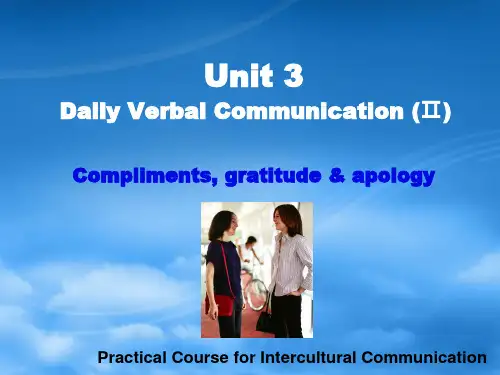
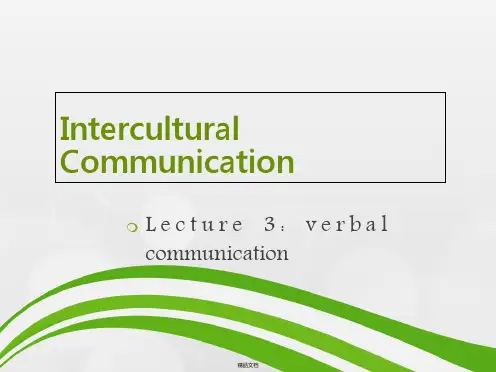

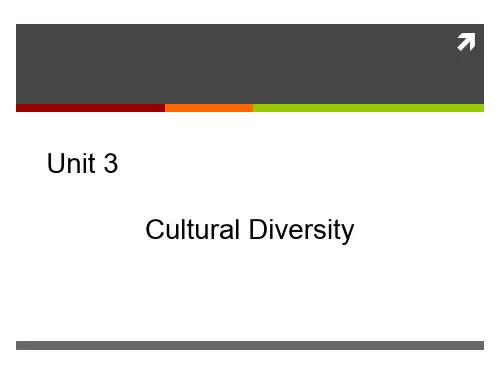
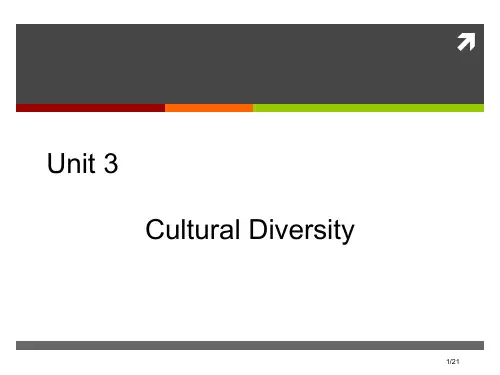
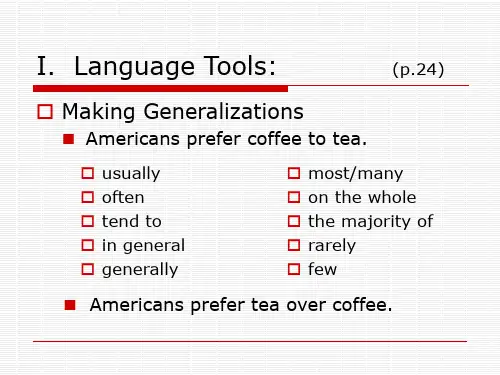

新编跨文化交际英语教程参考答案Unit3Unit 3Cultural DiversityReading IDifferent Lands, Different Friendships Comprehension questions1. Why is it comparatively easy to make friends in the United States?Because few Americans stay put for a lifetime. With each move, forming new friendship becomes a necessity and part of their new life.2. Do people from different countries usually have different expectations about whatconstitutes friendship and how it comes into being?Yes. The difficulty when strangers from two countries meet is their different expectations about what constitutes friendship and how it comes into being.3. How is friendship in America different from friendship in West Europe?In West Europe, friendship is quite sharply distinguished from other, more casual relationships, is usually more particularized and carries a heavier burden of commitment, while in America the word “friend”can be applied to a wide range of relationship and a friendship may be superficial, casual, situational or deep and enduring.4. In what country does friendship have much to do with one's family? And in whatcountry does it not?In Germany, friendship has much to do with one‘s family asfriends are usually brought into the family, while in France it doesn't as, for instance, two men may have been friends for a long time without knowing each other‘s personal life.5. What is friendship like when it is compartmentalized? For instance, a man may play chess with a friend for thirty years without knowing his political opinions, or he may talk politics with him for as long a time without knowing about his personal life. Different friends fill different niches in each person's life.6. What are friendships usually based on in England?English friendships are based on shared activity. Activities at different stages of life may be of very different kinds. In the midst of the activity, whatever it may be, people fall into steps and find that they participate in the activity with the same easy anticipation of what each will do day by day or in some critical situation.7. Do you think friendship shares some common elements in different cultures? If youdo, what are they?Yes. There is the recognition that friendship, in contrast with kinship, invokes freedom of choice. A friend is someone who chooses and is chosen. Related to this is the sense each friend gives the other of being a special individual, on whatever grounds this recognition is based. And between friends there is inevitably a kind of equality of give-and-take.8. What do you think is the typical Chinese concept of friendship? Is it similar to ordifferent from any of the Western friendships?It seems that the typical Chinese concept of friendship lays great emphasis on personal loyalty and also has much to do with family. It may be similar to Germany friendship to some extentand quite different from other Western friendships. Reading II Comparing and Contrasting CulturesComprehension questions1. How is the mainstream American culture different from the Japanese culture?Americans believe that human nature is basically good and man is the master of nature. They are future-oriented and “being”-oriented. Their social orientation is toward the importance of the individual and the equality of all people. However, the Japanese believe that human nature is a mixture of good and evil. Man is in harmony with nature. They are both past-oriented and future-oriented. And they are both “growing-”and “doing-”oriented. They give emphasis to authorities and the group.2. Can you find examples to support the author's view of traditional cultures indifferent value orientations?For example, the traditional Indian culture believes that man is subjugated by nature and it is being-oriented (which can be exemplified by its caste system). Also, traditional Chinese culture is past-oriented, for emphasis has long been given to learning from the old and past.3. Why do Americans tend to equate “change” with “improvement”and regard rapidchange as normal?Concerning orientation toward time, Americans are dominated by a belief in progress. They are future-oriented. They believe that “time is money”and have an optimistic faith in the future and what the future will bring. So they tend to equate“change”with “improvement”and consider a rapid rate of change as normal. 4. What does “Electric Englishman” mean when it is used todescribe the American?As for activity, Americans are so action-oriented that they tend to be hyperactive. That's why that they have been described as “Electric Englishmen”, who always keep themselves busy.5. How would you explain the fact that contradictory values may exist in the sameculture?As time changes faster and faster and there is more contact between cultures, it is more likely to find contradictory values existing in the same culture. This is especially the case in a society that is being transformed from a traditional one into a modern one. For example, in the Japanese culture, some people may still be very past-oriented and some are rather future-oriented, and even the same people may be sometimes past-oriented in certain situations and sometime future-oriented in other situations.6. What can we get from models of this kind about cultural differences?Models of this kind are quite useful in giving rough pictures of striking contrasts and differences of different cultures. However, such a model only compares cultures on some basic orientations. It does not tell us everything about every conceivable culture. We have to recognize that models of this kind are over-simplifications and can only give approximations of reality.7. Do cultural values change as time changes?Yes, the values may be in the process of marked change due to rapid modernization and globalization. However, they have away of persisting in spite of change. The evolution of values is a slow process, since they are rooted in survival needs and passed on from generation to generation.8. How is communication influenced by differing cultural values?Putting people from one culture into another culture with radically different value orientations could cause stress, disorientation, and breakdowns in communication.Case Study Case 9Hierarchy is significant in the Japanese culture. This structure is reflected everywhere in Japanese life, at home, school, community, organizations, and traditional institutions such as martial arts or flower arrangements.In this case, the young chairman must have had his own ideas about how to manage the company; however, when encountered with his grandfather's dissenting opinions, he dared not to take a stand against him. This may manifest the rigid hierarchical structure in the Japanese society. In the Japanese society, how hierarchy is formed depends mainly on seniority, social roles, and gender. As a respectable senior member of the family and the former leader of the company, the grandfather obviously overpowered the inexperienced young chairman. In other words, the grandfather seemed to be an absolute authority for the young chairman. In Japanese culture, challenging or disagreeing with elders' opinions would be deemed as being disrespectful and is often condemned. People in lower positions are expected to be loyal and obedient to authority. That‘s why the young chairman didn't say anything but just nodded and agreed with his grandfather.But Phil seemed to know little about the Japanese culture inthis aspect. In many Western cultures, particularly American culture, seniority seldom matters very much in such situations, and young people are usually encouraged to challenge authority and voice their own opinions. Unfortunately, his outspoken protest could easily offend the grandfather and he might be regarded as a rudeand ill-bred person by other Japanese.Case 10In Japan, a company is often very much like a big family, in which the manger(s) will take good care of the employees and the employees are expected to devote themselves to the development of the company and, if it is necessary, to sacrifice their own individual interests for the interests of the company, from which, in the long run, the employees will benefit greatly. But for the French, a company is just a loosely- knit social organization wherein individuals are supposed to take care of themselves and their families. Moreover, the way the French make decisions in the family might also be different from the typical Japanese one, which may not often involve females and the power to decide usually lies with the dominating male. As there are such cultural differences between the Japanese and the French, Mr. Legrand's decision made Mr. Tanaka feel dumbfounded.Case 11Incidents such as these can point to possible cultural differences in so-called “polite”behavior, and at the same time highlight the tendency for people to react emotionally to unexpected behavior.People in most cultures would probably agree that an apology is needed when an offence or violation of social normshas taken place. However, there may be differing opinions as to when we should apologize (what situations call for an apology) and how we should apologize. To many Westerners, Japanese apologize more frequently and an apology in Japanese does not necessarily mean that the person is acknowledging a fault. To many Japanese, Westerners may seem to be rude just because they do not apologize as often as the Japanese would do. In this case, forinstance, the attitude of the Australian student's parents is shocking to the Japanese but will be acceptable in an English-speaking society, for the student is already an adult and can be responsible for her own deeds.Case 12In this case, it seems that the Chinese expectations were not fulfilled. First, having two people sharing host responsibilities could be somewhat confusing to the hierarchically minded Chinese. Second, because age is often viewed as an indication of seniority, Canadiantheir of youth the considered have might Chinese thehosts as slight to their own status. Third, in China, it is traditional for the host to offer a welcome toast at the beginning of the meal, which is the reciprocated by the guests; by not doing so, the Canadian might be thought rude. The abrupt departure of the Chinese following the banquet was probably an indication that they were not pleased with the way they were treated. The Canadians' lack of understanding of the Chinese culture and the Chinese ways of communication clearly cost them in their business dealings with the visiting delegation.。
跨⽂化交际Unit3Unit 3 Daily Verbal Communication (II)教学⽬标:Through this unit, Ss can get a general idea of the cultural differences in some daily verbal communication, such as compliments, compliment responses, gratitude and apology in English and Chinese. Ss can also know how to avoid making misunderstanding or dealing with the cultural puzzles under such situations.教学内容:Daily Verbal Communication教学重点与难点:The analysis and understanding of the differences between Chinese people and the Western people to make some daily verbal communication.教学过程:Step 1 The Joy Luck Club --A film about cultural conflicts.Qs for discussion: (Please try to be objective in discussion)1. What does this movie focus on?2. The Joy Luck Club presents many conflicts in the mother-daughter relationship. The conflicts are embodied in 3 aspects. What are they in the film?(First, the mothers and the daughters are in different cultural backgrounds, and the daughters cannot understand their mothers. Second,the communication problems also arise because the mothers are from China, while daughters are born in the United States, their cultural backgrounds are different, and also because they speak different languages. Third, the mothers and the daughters have totally different experiences. The mothers have been to America during the World War Ⅱ, when China was intruded by Japanese army. The daughters are born in America; they don’t appreciate the Chinese tradition and view their Chinese history as a barrier to their dreams.)3. What is the solution of cultural conflicts mentioned in the film?--To explore a balance of cultural conflicts.An important theme of the filml is the reconciliation of the multi-cultural clashesBackground about this novel:The Joy Luck Club is the first novel of Amy Tan,a famous Chinese-American writer. In the novel she mainly describes the relationship between the Joy Luck Club mothers and their daughters and cultural conflicts.The novel is set in the age of globalization and in the multicultural American society; it represents the process of misunderstanding, conflicts, understanding and blending between the mothers and the daughters. Globalization not only brings many chances to china but also brings cultural challenges to China. As the degree of globalization is getting deeper, Chinese culture faces the danger of being integrated and changed by other cultures.Through contextual analysis of the Joy Luck Club and the cultural conflicts and blending embodied in it, this novel demonstrates that in the age of globalization a balance should be kept among different cultures, and a right attitude towards cultural conflicts should be taken, and it suggests that the native culture should not be thrown away when learning from others, and instead, it should be transmitted to others.Background about the author:Amy Tan was born in Oakland, California. Both of her parents were Chinese immigrants. Her father, John Tan, was an electrical engineer and Baptist minister. In China, her mother Daisy had divorced an abusive husband but lost custody of her three daughters. She was forced to leave thembehind when she escaped on the last boat to leave Shanghai in 1949. Her marriage to John Tan produced three children, Amy and her two brothers. Amy Tan’s family is a typical immigrant family, her parents are the first generation immigrants, and she is the second-generation immigrant.She has experienced the same kind of conflicts which she portrayed in the novel. She and her mother were in constant conflict when she finished the high school in Switzerland. She and her mother didn’t speak for six moths after Amy Tan left the Baptist College her mother chose for her to follow her boyfriend to San Jose City College. Tan further defied her mother by abandoning the pre-med course her mother had urged her to pursue the study of English and linguistics.Step 2: Presentation of the textPart 1:Compliments and compliment responses●Lead-inCompliments and compliment responses are an essential part of daily verbal communication. Various expressions of compliments and compliment response manifest the cultural variations and different cultural roots.1.1 Chinese modestyOh, it’s an ordinary dress I bought in China.Should I blush, or should I tell him you don’t really mean itGrowing flowers is my hobby, b ut I’m not much good at it.I really know so little about the subject....1.2 Social functions of complimentsCreating or reinforcing solidaritygreeting peopleexpressing thankscongratulationencouraging peoplesoftening criticismstarting a conversationgetting over embarrassment1.3 Differences between Chinese compliments and English compliments1.3.1 The Semantic formula◆English:About 80% adj. 16%verbsThis was a great meal.Bill, you look so nice today.I love your dresses.◆Chinese: Mainly adj. Adv. verbs你的房间不错。